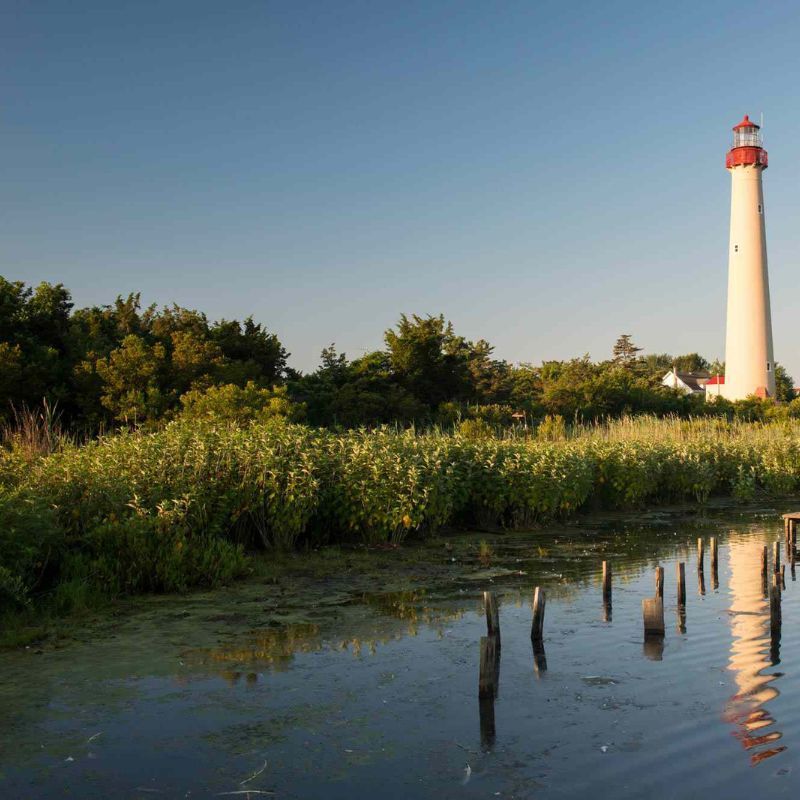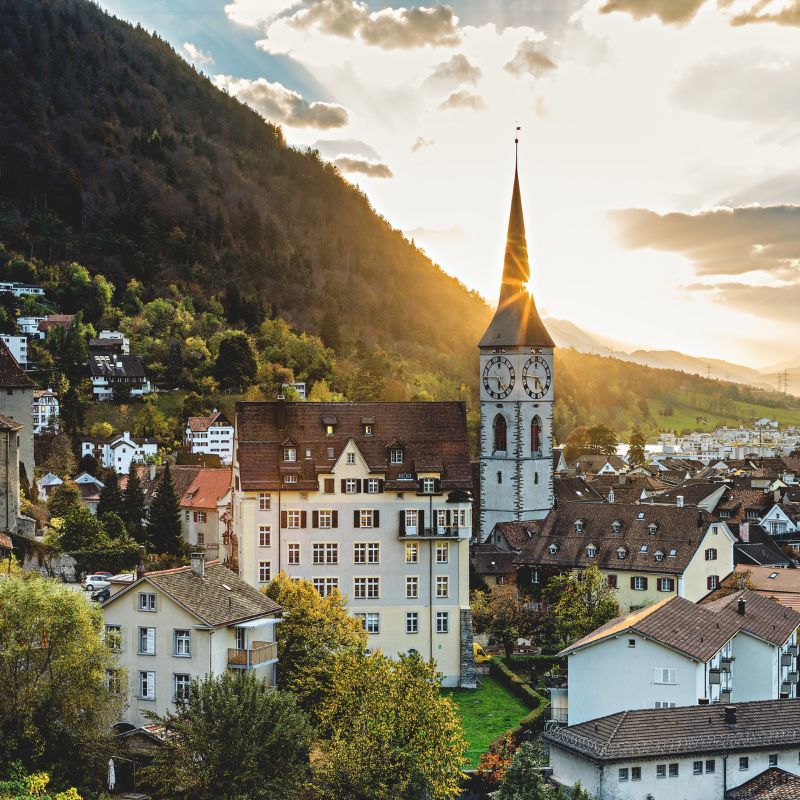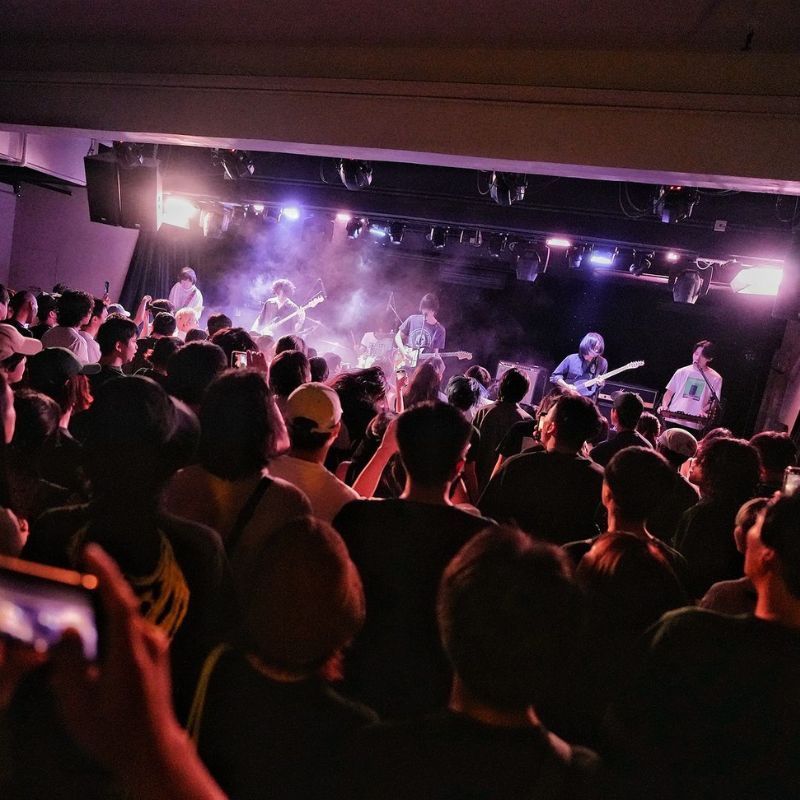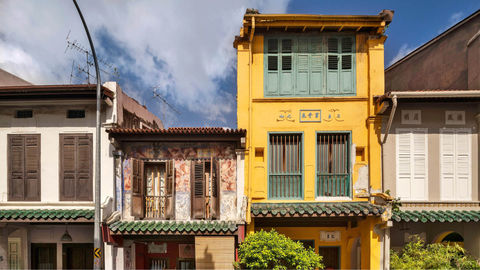
Nowhere is Singapore’s multilayered past more visible than in the facades of its shop-houses. Today, these long-neglected architectural jewels are being celebrated and restored to their former splendour. Text by Simon Willis; photographs by Darren Soh
When my wife and I moved to Singapore last year for her new job, I expected to be travelling in the future. On my previous visits, Singapore’s famously efficient airport, Changi, had seemed like the principal node of a gleaming network of expressways, subway lines, and skyscrapers, all designed to maximise the flow of people and capital. It is a place where your car automatically pays for parking, where the traffic lights are controlled by artificial intelligence, and where the cityscape is gilded with ever more fantastical architectural forms. Marina Bay Sands (marinabaysands.com), a triple-towered hotel and casino, is capped by a horizontal sky garden resembling a marooned spaceship. Gardens by the Bay (gardensbythebay.com.sg), the park next door that had a starring role in Crazy Rich Asians, is dominated by a cluster of towering metal trees that look like they were designed by a robot with a taste for horticulture.

So when I arrived, I was surprised to find myself immersed in history. We moved into an apartment in Joo Chiat, a neighbourhood on the city-state’s eastern coast that was developed in the 1920s. Our apartment is in a shop-house, a style of building imported by Chinese settlers in the early 19th century that formed the warp and weft of the city’s architectural fabric for more than 100 years. The template was simple. Shop-houses were built two or three stories high and were designed to contain businesses on the ground floor and living spaces upstairs. Out front was covered verandas called ‘five foot ways’, open-ended to create shaded colonnades. Inside, light wells with a clear view of the sky formed miniature courtyards brightened by the sun and cooled by the rain.
Ours was built between the two World Wars, and with its simple white facade, has an elegant austerity. The same cannot be said for others around the corner. On my way to get my morning coffee, I walk down Joo Chiat Road, the district’s main thoroughfare, which is lined with shop-houses decorated with Corinthian pilasters, stucco leaves, and grids of coloured tiles depicting pomegranates, peaches, pineapples, peacocks, and hummingbirds. On weekends, we often get breakfast at Mr and Mrs Mohgan’s, a stall that sells Singapore’s finest roti prata, a fried Indian flatbread. Diagonally opposite the stall, a one-block stretch of Koon Seng Road has grand old shop-houses painted in Instagram-friendly shades of pink, pistachio, emerald, and primrose. Beneath the upstairs windows, herons flap their wings and tigers hunt their prey, forever frozen in plaster relief.

Shop-houses are records of Singapore’s multicultural history. After its founding in 1819 by British politician and empire builder Stamford Raffles, the city grew into a powerful entrepôt, attracting merchants and traders from all over the world. They brought their architectural tastes with them and left their mark on the shop-houses they inhabited. The dwellings in Joo Chiat were built by Peranakans, people of mixed Chinese and Malay descent who settled in Singapore and whose culture was a rich blend of Chinese, Malaysian, Indonesian, and European influences. Elsewhere in the city, you can see shop-houses with Islamic latticework, rococo curlicues, Dutch gables, and French shutters.
The richness of these buildings did not comport with my preconceptions, which I quickly realised were out of date. It is true that more than 50 per cent of Singapore’s old city was demolished by the march of modernity between the 1970s and 90s. It is also true that much of the urban sprawl has the flavourless internationalism of an airport terminal. But in the past decade, Singapore has entered a more preservationist phase, with shop-houses being restored and renovated all over town—and snapped up at eye-watering prices. Simon Monteiro, a local realtor who specialises in old buildings, likens this boom to an art-market bubble. “People are buying them like Picassos,” he says. If Singapore once seemed like a city intent on replacing the past with the future, it is now taking a backward glance.

One morning, I went to meet Jimmy Seah, a vivacious man in his mid-50s who owns a shop-house on Spottiswoode Park Road, just north of Chinatown. The street is part of Blair Plain, a district developed in the 19th and early 20th centuries by local merchants, or towkays. To show off the sophistication of their tastes and to outdo their European counterparts, these merchants constructed some of the grandest shop-houses in Singapore. They incorporated all manner of international flourishes; several even have loggias on their top floors, the kind you see in a Venetian palazzo.
Seah bought his house in 2009, and at first glance, it struck him as unprepossessing. Low and plain, it had broken shutters, a mouldering white facade, and a collapsed roof. But then he began to chip away at the plaster covering the front of the building and started to see layers of colour underneath—the first blue, then flecks of red and green. Slowly, over the course of two months of careful chiselling, these traces coalesced into an image of birds perched on branches, and above them, faded reddish-brown shapes that Seah thinks originally depicted a cloud of bats in flight.
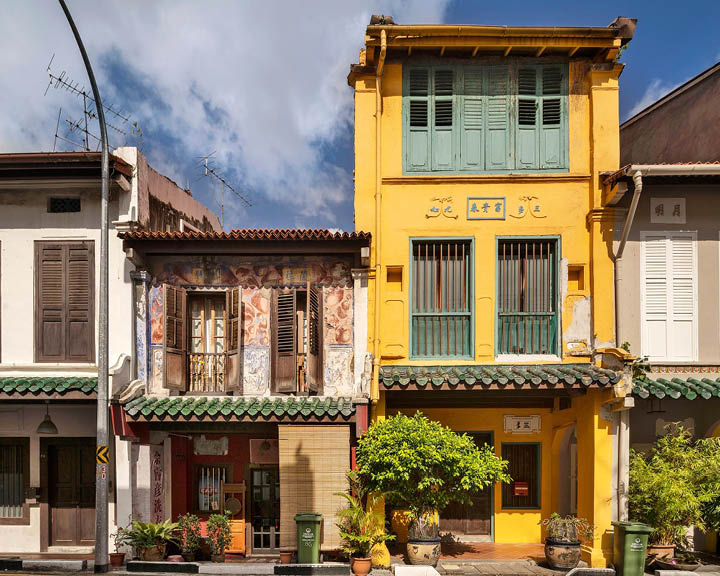
The fresco dated from the 1860s. This makes it not only the oldest painted shop-house facade in Singapore but the sole survivor of a time when, according to one French visitor who came to Singapore in 1831, all the shop-houses were “covered with brightly coloured frescoes.” The dull-looking building Seah had bought suddenly became a unique piece of architectural history and a window onto Singapore’s beginnings.
In the 1960s, when Seah was growing up in a shop-house, Singapore had only just gained independence from Malaysia and was a poor island in a state of disrepair. To keep housing affordable, the government instituted strict rent controls, the downside of which was that landlords had neither the money nor the incentive to keep their properties in good order. Seah’s family was crammed into a warren of tiny rooms. The roof leaked constantly, and he sometimes repaired the damage by fashioning makeshift guttering out of shuttlecock canisters. “My sisters and I used to complain,” he said. “Why do we have to live in this crappy old house?”
So they were only too pleased when, in the 1970s and 80s, the government began to knock them down to make way for new condo towers and public-housing blocks. “Lee Kuan Yew, the founder of modern Singapore, had a great vision,” Seah said. “You have to give people a roof over their heads before you can think of other things.”
But some felt that the focus on growth and efficiency stripped away soul, and Singapore developed a reputation for corporate blandness. Visiting in the 1990s, the sci-fi novelist William Gibson wrote that “the physical past, here, has almost entirely vanished.” The contemporary confection that had grown in its place felt to him like Disneyland. A few historically minded officials at Singapore’s Urban Redevelopment Authority (URA), the government body responsible for city planning, began to worry that the destruction was going too far—that Singapore was in danger of demolishing its identity. So, they began slowly to acquire shop-houses all over the city to protect them from developers, and then to sell them to owners interested in preservation.
Around the corner from Seah’s place is one of the most spectacular beneficiaries of this preservationist trend. The Baba House is a restored shop-house that now operates as a museum. It was built in the 1880s by the Wee family, who had made a fortune in shipping. The house was protected by the URA in the 1980s, but by the early 2000s, unoccupied and unrestored, it was weathering badly.
In 2006, it was sold to the National University of Singapore, whose architects and historians embarked on a renovation. They found traces of the original paint beneath more recent layers and gave the building back its original bright-blue coat. They re-created the ceramic appliqué cockerel that once strutted above the door and renovated the plaster panels that depict phoenixes and peonies, representing happy lovers. For the inside, they sourced authentic furniture, much of it from the Wee family, who had kept heirlooms like the wooden wedding bed, with its elaborate carving and gilding. The Baba House became a showcase for careful restoration and was a prelude to the popularity this kind of building has since enjoyed.
There are few places in Singapore that exemplify the shop-house boom better than Keong Saik Road. Until the late 1990s, this neighbourhood was a red-light district. Its streets are lined almost entirely with shop-houses, but because nobody wanted to live or work in them, their owners were forced to rent them out to the only tenants they could find: brothels and massage parlours.

Today, Keong Saik Road is thoroughly gentrified and is known for a different kind of hospitality: a string of fashionable bars, restaurants, and hotels. KēSa House is a boutique hotel owned by Ashish Manchharam, a developer who owns four other shop-house hotels in the city, with another planned for 2021. Manchharam spent his childhood in a shop-house in Kampong Glam, where his grandfather, originally from the Indian state of Gujarat, had set up a successful textile firm. By the late 2000s, Manchharam, now in the property business, had already converted shop-houses into ateliers for several young fashion designers in need of studio space. But tourism was growing dramatically—between 2005 and 2018, the number of visitors to Singapore doubled—and he saw a market among people who wanted a taste of the old world instead of the city’s glitzy novelties.
KēSa House, like Manchharam’s other hotels, is an exercise in dramatic reinvention. The exterior has been faithfully maintained, the pilasters and swags picked out in bright white against the turquoise walls. But the interior has been transformed into a minimal, contemporary space—all pale wood and polished concrete. This kind of ‘facadism’, where the exterior acts as a historical gloss on an otherwise 21st-century experience, has plenty of detractors, who feel it robs the buildings of their original spirit. But the basic template of the shop-house has proved to be endlessly adaptable: KēSa House sits opposite Potato Head, a three-story restaurant and club that opened in 2014. Located on an acutely angled corner, it’s housed in a majestic Art Deco shop-house that resembles a white cruise liner from the 1930s. Bauhaus and Brutalist examples can be found elsewhere in the area. Shop-houses have always changed with the times and reflected architectural fashion.
A few days after meeting Jimmy Seah, I headed back to Blair Plain to talk to Fang Low, a 32-year-old entrepreneur who runs a company called Figment (figment.live). Low’s family has been collecting shop-houses for more than two decades, and under the Figment brand, he now commissions Singaporean architects and designers to repurpose them into upscale ‘co-living spaces’, where people on extended stays in the city can rent rooms and live together. “It’s like shop-houses used to be,” he told me, “with multiple families living in the same building.”

I met him at 28 Blair Road, once his childhood home and now his company’s latest project. Above an ornate pair of traditional, saloon-type shop-house doors, or pintu pagar, is a panel bearing the Chinese characters for ‘Low Family Residence’. That is where the old world ends. Inside, the house is completely white —white walls and floor, white furniture, white-painted porcelain on a white shelf, white ceiling lamps made by a local artist from upcycled plastic wrap. But as you explore the house, you see small areas of the wall where the bare brick shows through or tiny circles on a porcelain pot where the original decoration has been left unpainted—fleeting glimpses of the history that lies beneath the new gloss. A little like Singapore itself.
How to See Singapore’s Shop-Houses
Getting There
Singapore Airlines (singaporeair.com) operates direct flights from major Indian metros to Singapore.
Stay
KēSa House (doubles from INR 7,482; 8mcollective.com/kesahouse), in Chinatown, occupies a row of shop-houses from the 1920s. Its 60 compact rooms have bright, contemporary interiors; some have private roof terraces.
Eat
The Michelin-starred Zén (tasting menu INR 23,943; restaurantzen.com), in a shop-house in the Bukit Pasoh area, is the most exclusive restaurant in Singapore. With space for about 15 guests, it serves an eight-course tasting menu that mixes Scandinavian and Asian flavours. For something more casual, try Potato Head (entrées INR 748– INR 1,870; potatohead.co), an elevated burger joint with a rooftop bar in a corner shop-house that resembles the prow of a ship.
Learn
Part of the National University of Singapore, Baba House (babahouse.nus.edu.sg) is a restored shop-house with exhibits dedicated to the city’s Peranakan culture. Jane’s Tours (janestours.sg) runs guided architectural tours of Singapore. Shop-houses are included in several of its itineraries, including Emerald Hill, Chinatown, and Joo Chiat. Tours generally last half a day and cost INR 4,115 per person.
Related: Lisa Ray Shares A Glimpse Of Her Life In Singapore Under Lockdown





